63+ Sample Artist Agreements
-
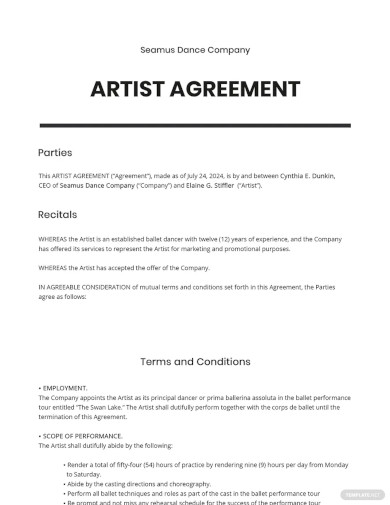
Artist Agreement Template
download now -
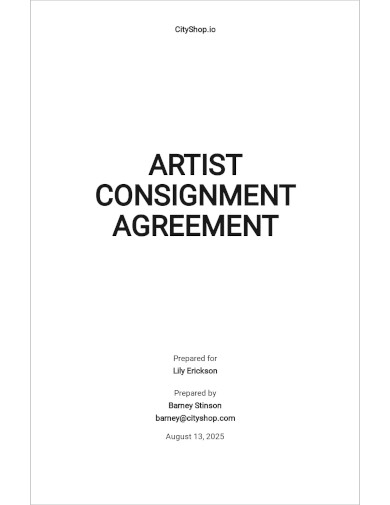
Artist Consignment Agreement Template
download now -
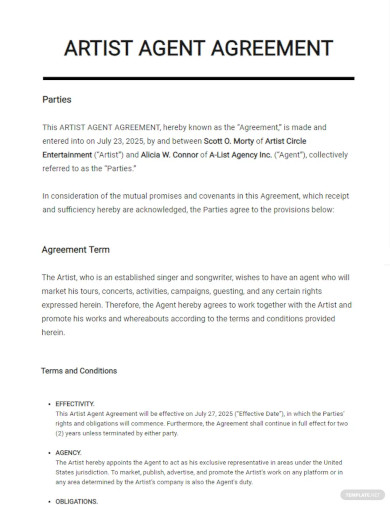
Artist Agent Agreement Template
download now -
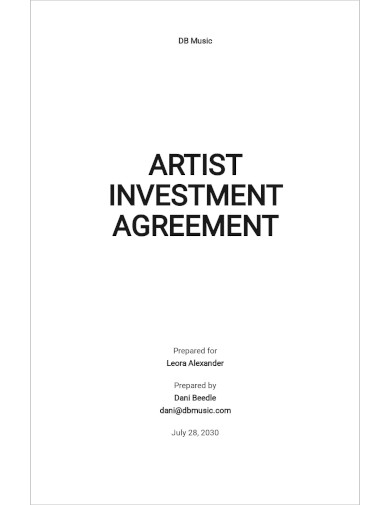
Artist Investment Agreement Template
download now -
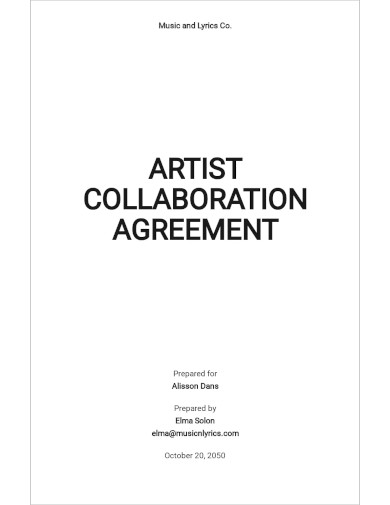
Artist Collaboration Agreement Template
download now -
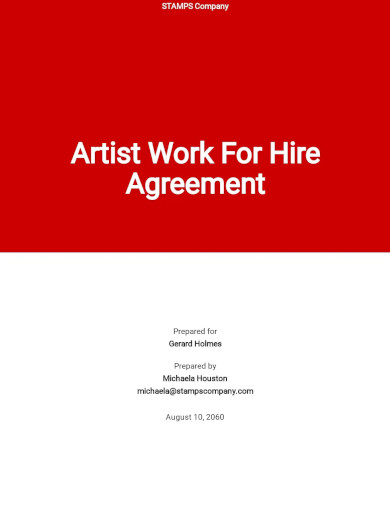
Artist Work For Hire Agreement Template
download now -
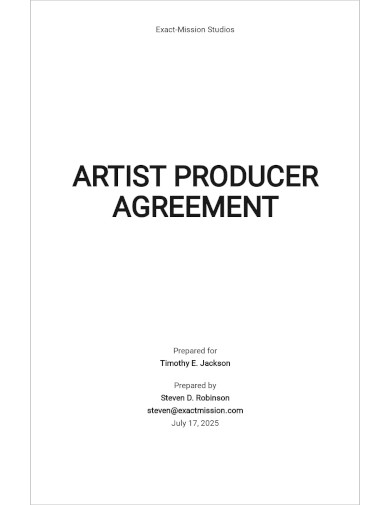
Artist Producer Agreement Template
download now -
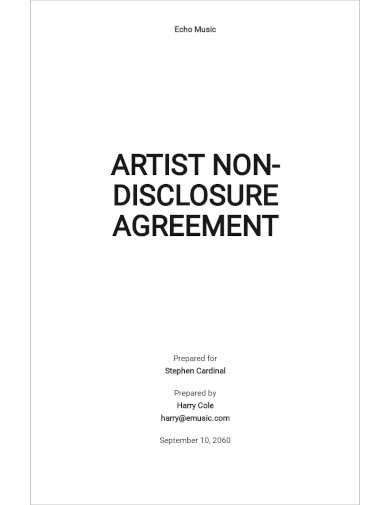
Artist Non-Disclosure Agreement Template
download now -
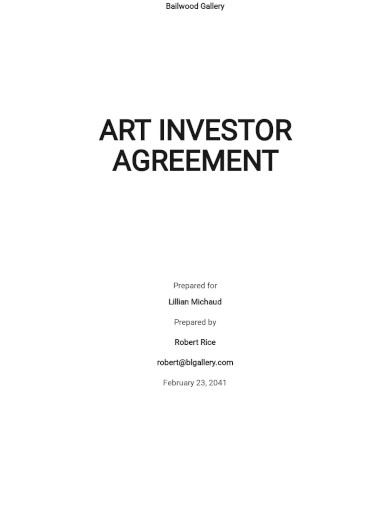
Artist Investor Agreement Template
download now -
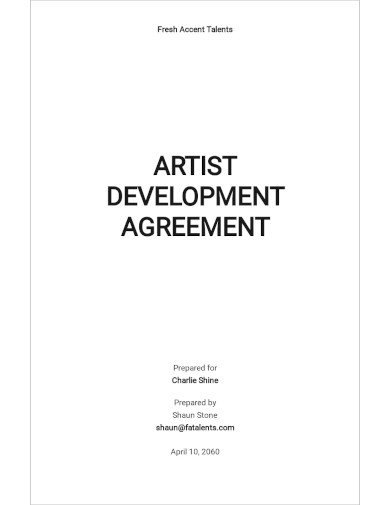
Artist Development Agreement Template
download now -
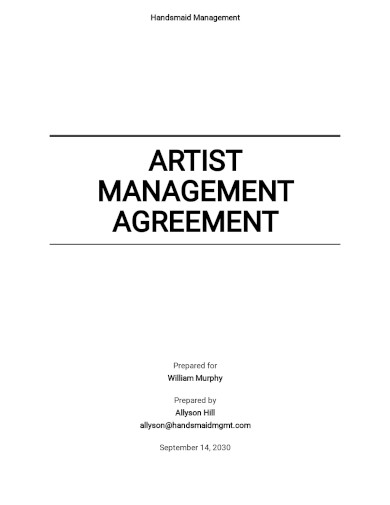
Artist Management Agreement Template
download now -
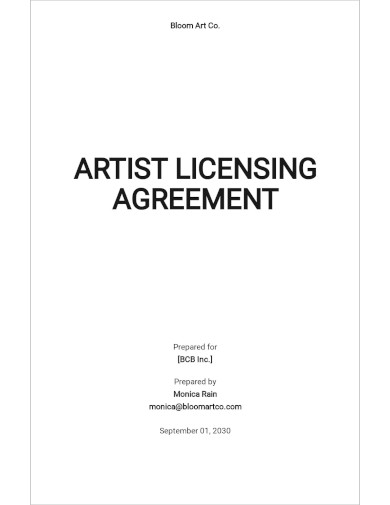
Artist Licensing Agreement Template
download now -
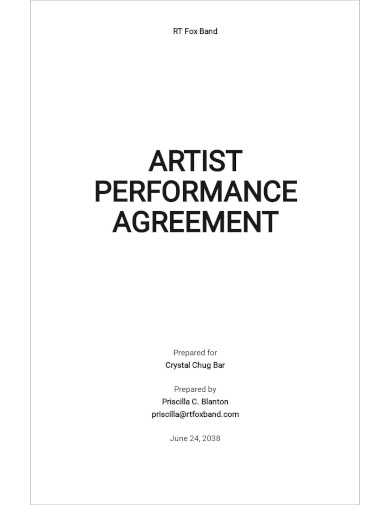
Artist Performance Agreement Template
download now -
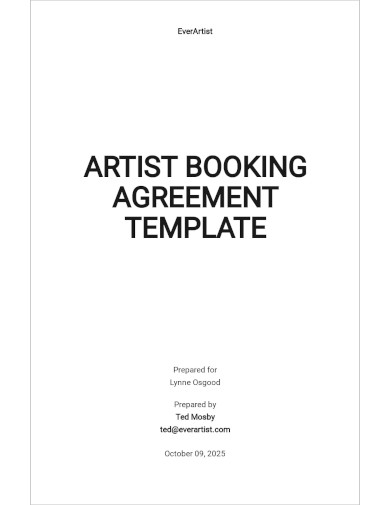
Artist Booking Agreement Template
download now -
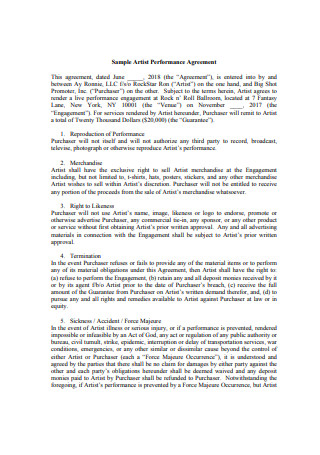
Sample Artist Performance Agreement
download now -
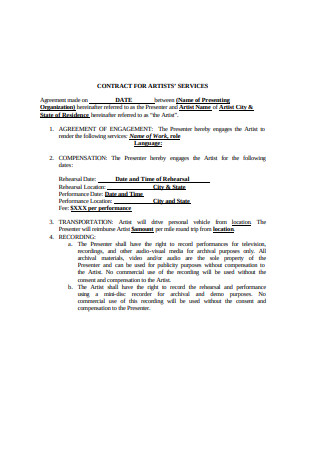
Artwork Artist Contract Agreement
download now -
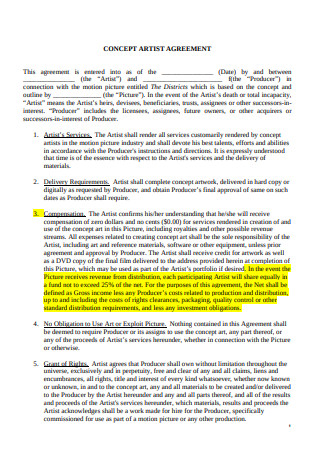
Artist Booking Agreement Format
download now -
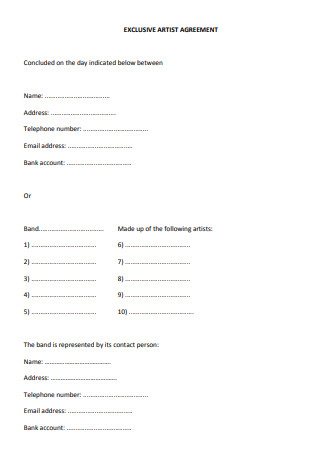
Exclusive Producer Artist Agreement
download now -
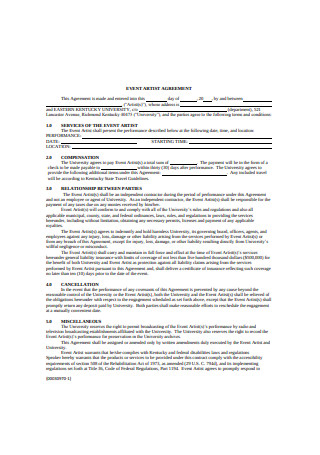
Event Letter Artist Agreement
download now -

Artist Contract Performance Agreement Format
download now -
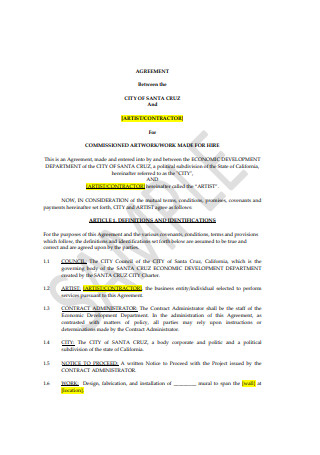
Artist Contractor Independent Contractor Agreement
download now -

Sample Artist Work for Hire Residency Agreement
download now -
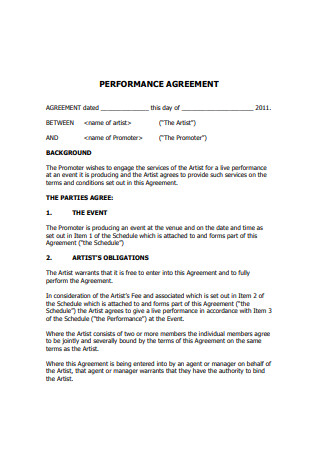
Artist Concert Performance Agreement
download now -
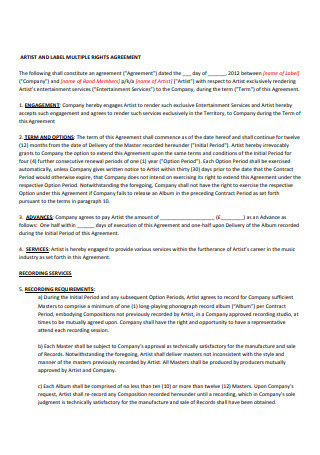
Visual Artist Agreement Sample
download now -
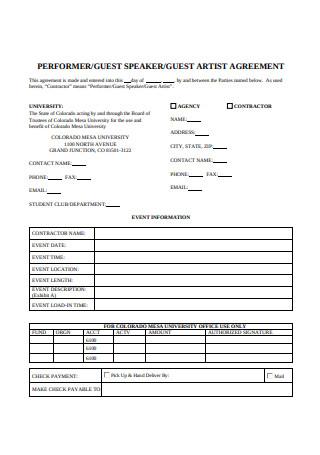
Artist Agreement Example
download now -
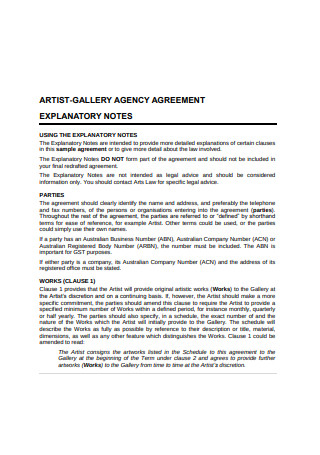
Artist Gallery Agency Agreement
download now -
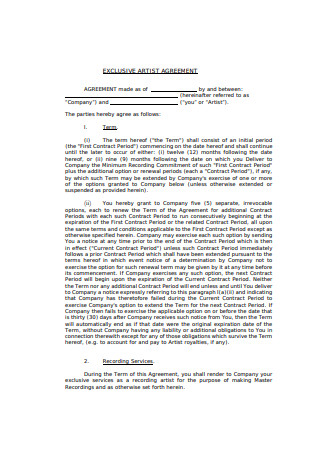
Exclusive Artist Agreement Format
download now -
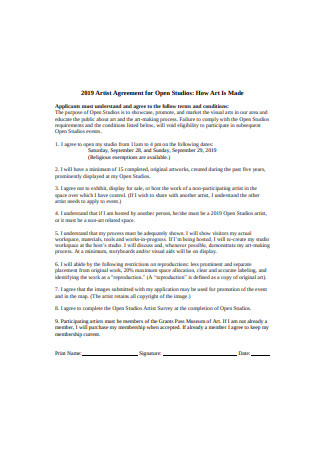
Basic Artist Agreement
download now -
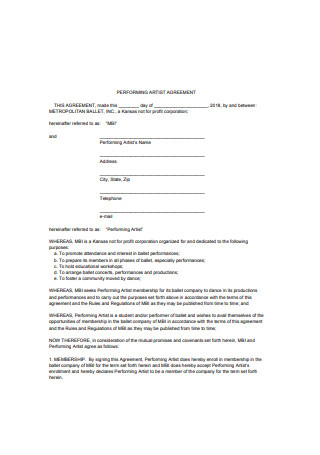
Performing Artist Agreement
download now -
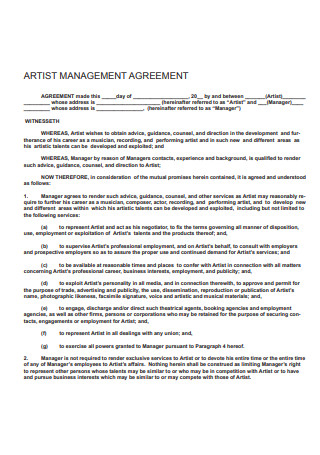
Artist Management Agreement
download now -
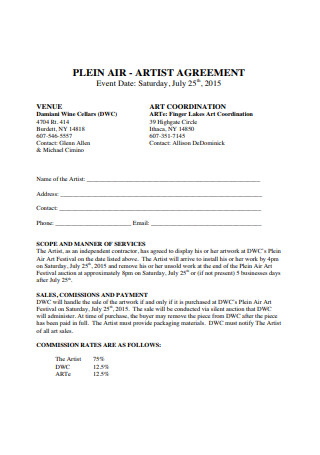
Basic Artist Agreement Format
download now -
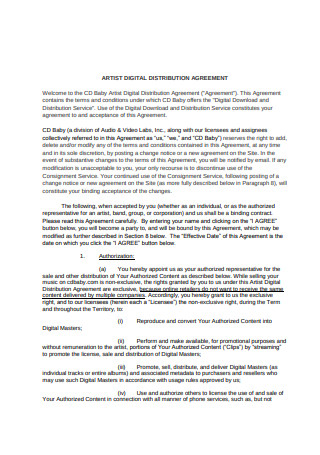
Artist Digital Distribution Agreement
download now -
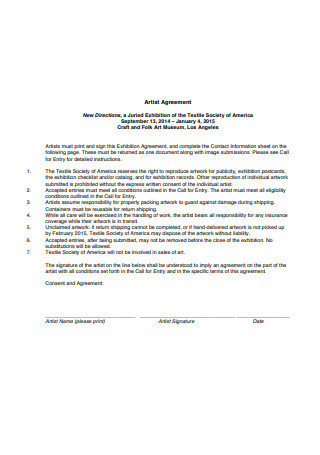
Standard Artist Agreement
download now -
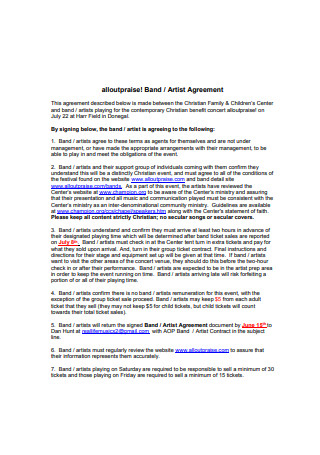
Formal Artist Agreement
download now -
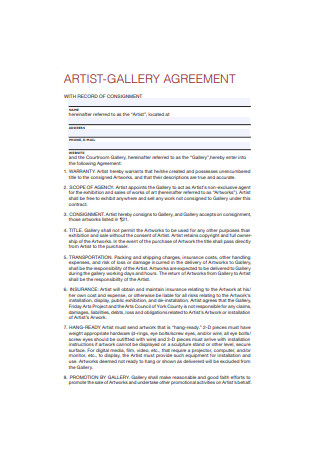
Artist Gallery Agreement
download now -
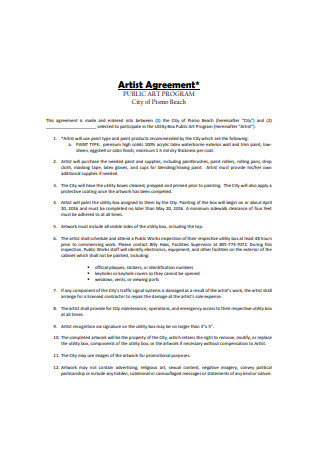
Sample Artist Agreement Format
download now -
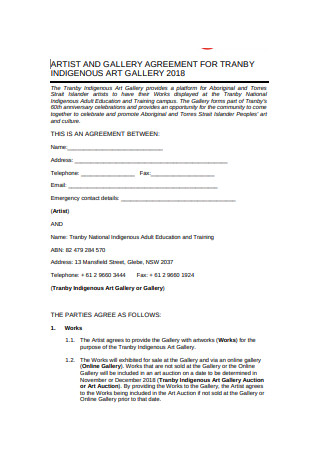
Formal Artist Agreement Example
download now -
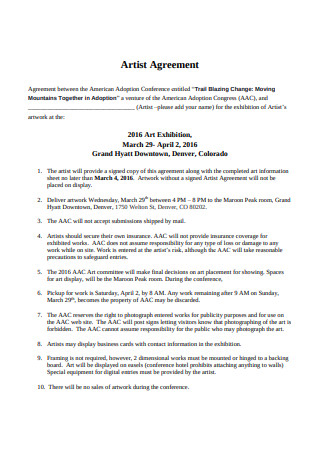
Standard Artist Agreement Example
download now -

Printable Artist Agreement
download now -
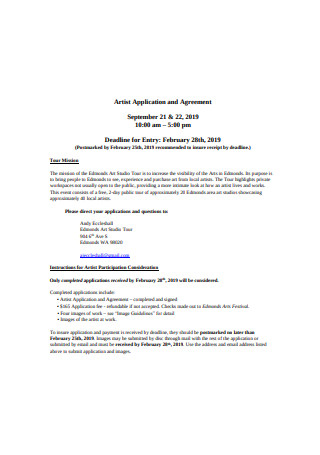
Artist Application and Musician Agreement
download now -
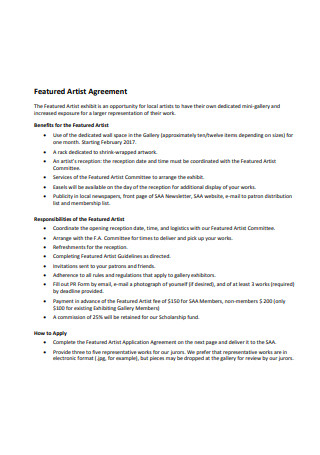
Featured Singer Contract Artist Agreement
download now -
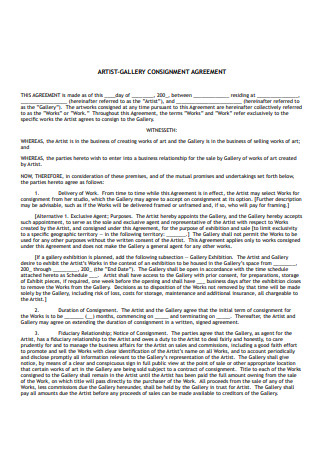
Artist- Gallery Mural Consignment Agreement
download now -
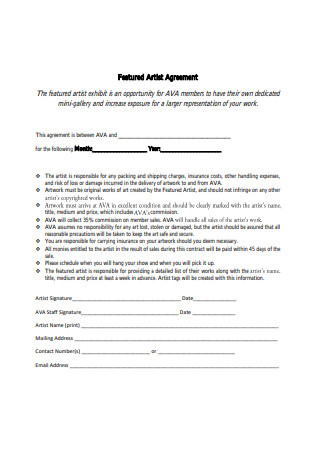
Featured Artist Illustration Agreement Sample
download now -

Artist Music Event Commission Agreement
download now -
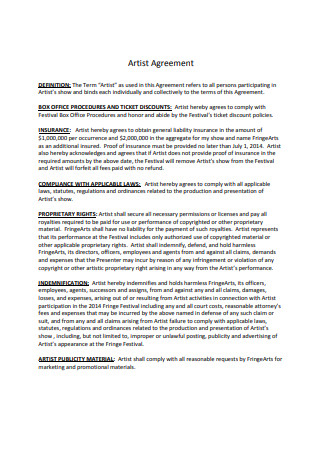
Standard Artist Agreement Format
download now -
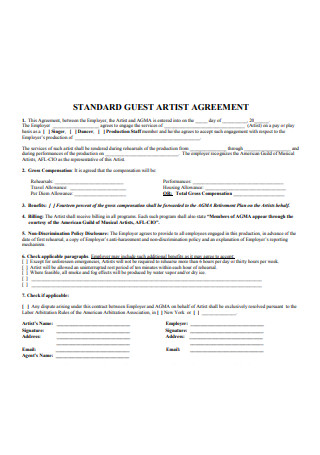
Standard Guest Artist Agreement
download now -

Simple Artist Agreement Format
download now -
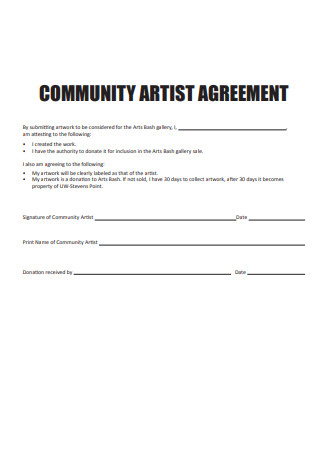
Community Artist Agreement
download now -
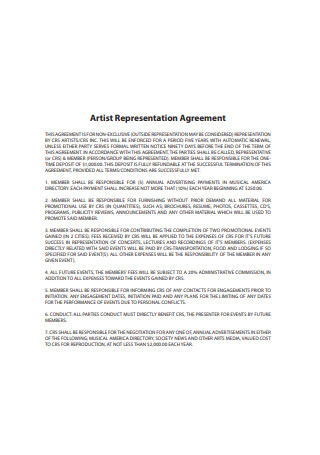
Artist Representation Agreement
download now -
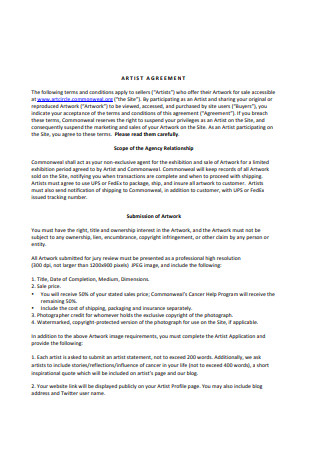
Printable Artist Agreement Example
download now -

Standard Artist Agreement Sample
download now -

Basic Artist Agreement Example
download now -
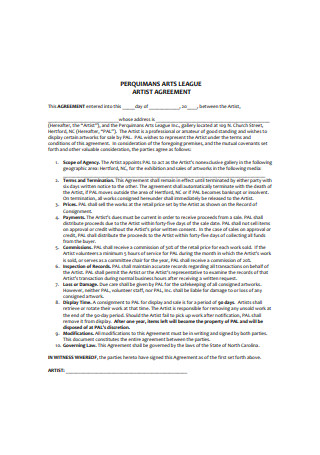
Formal Artist Agreement Sample
download now -
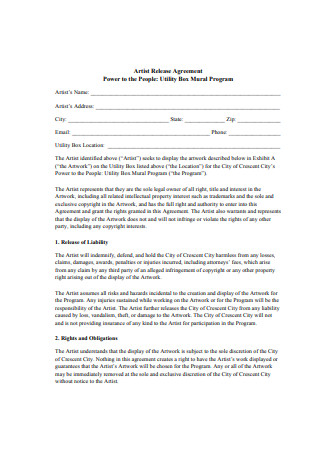
Artist Release Agreement
download now -
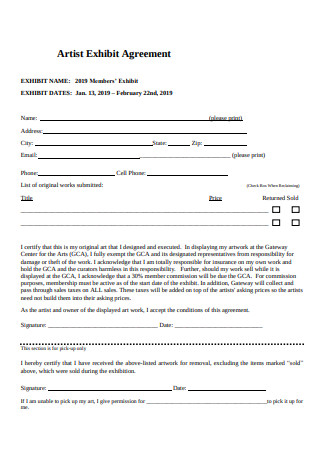
Artist Exhibit Agreement
download now -
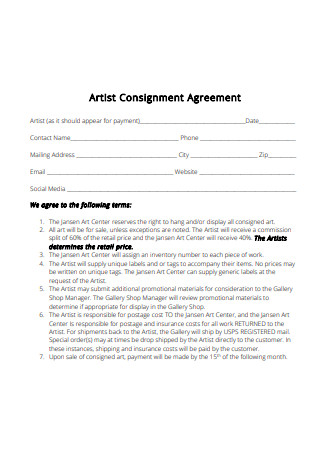
Artist Consignment Agreement
download now -

Professional Artist Agreement
download now -
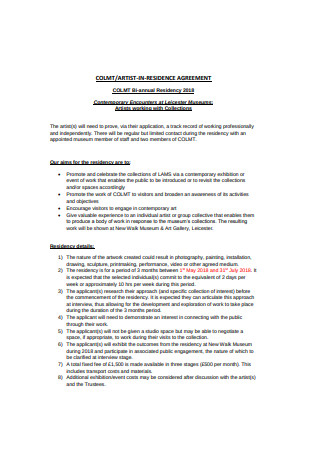
Artist in Residence Agreement
download now -
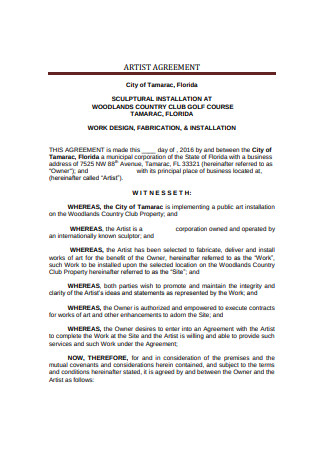
Artist Contract Agreement Example
download now -
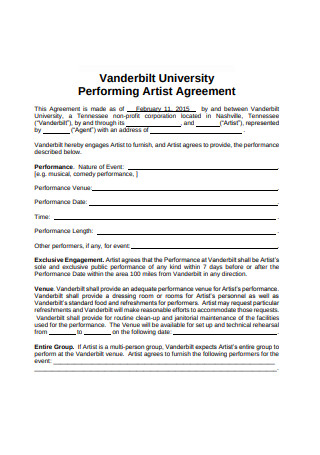
Performing Artist Agreement Example
download now -
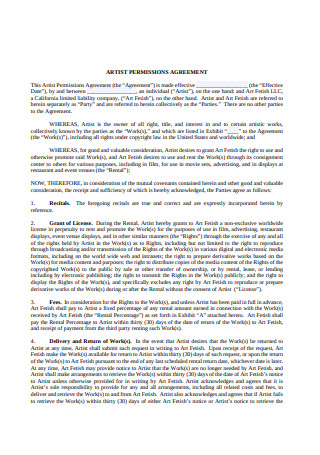
Artist Permissions Agreement
download now -
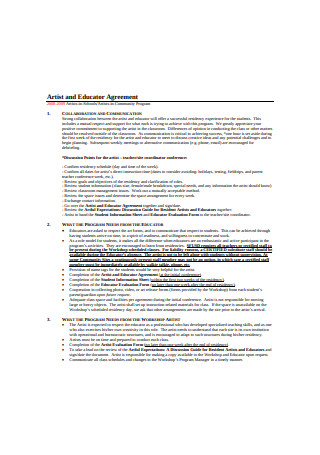
Artist and Educator Agreement
download now -
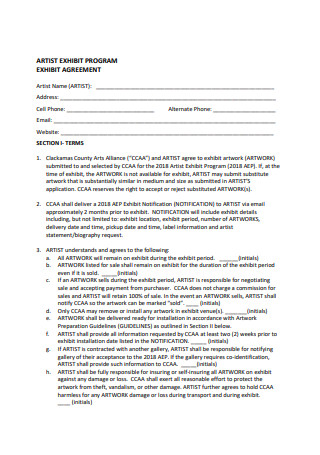
Artist Exhibit Agreement Format
download now -
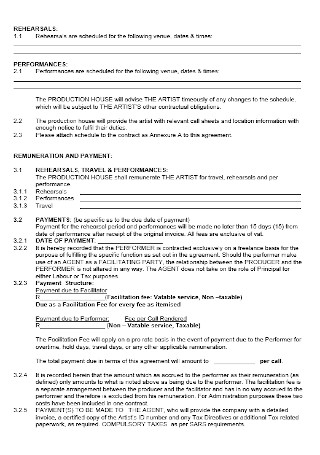
Agreement for Engagement of Performing Artist Template
download now
What is an Artist Agreement?
The role of arts and artists in modern society is often under public questioning and doubt as to why someone would pursue arts major in a heavily industrialized economy. It’s not as if contemporary art can be as moving and revolutionary as it was during the Renaissance period. But, in this modern-day and age, art developed different faces and intertwined with the cogs and gears of the business and digital age. Forms of art are now the main mediums of several companies, such as the entertainment industry. It is also a primary driving force for other essential facets, such as marketing and advertising.
The various forms of arts also became the primary income source for some. Some people dedicate their entire career to perfect their style of visual art. Others produce music and perfectly synchronized dance movements that capture a literary piece from another artist. The interconnection of efforts and outputs raises the need for artist agreements. In order to protect both parties who aim to work together, artist agreements uphold the identity of each artist as they showcase their skills along with and working together with institutions and other artists.
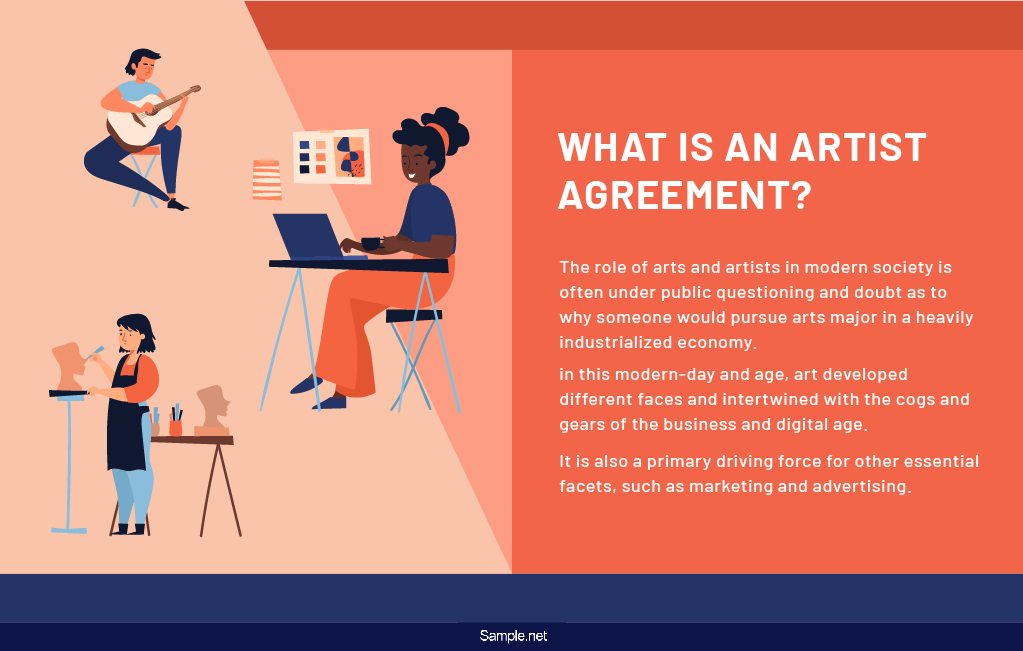
The Features of an Artist Agreement
Similar to a carefully crafted work of art such as an abstract painting that has several layers of paint to effectively portray the artist’s message, an artist agreement also has several key components that make it useful for the parties involved. An agreement that lacks certain elements may still be legal, but it won’t entirely serve its purpose. Just like a piece of art that seems to be lackluster.
So, Who Owns What?
The progress of technology made it easier to produce new forms of art and replicate it. But, copying and recreating these artforms without crediting the original artist also became more rampant than, let’s say, fifty years ago. Budding artists use various social networking sites and open forum websites to post their works to get recognition, with hopes of breaking into the popular and mainstream art scene. However, this free opportunity poses several risks. Copying works and using it as one’s own is not a new trick in the art industry. There are several infamous cases in the past regarding copyright infringement that cost a significant amount of damages.
Strikingly Familiar Rhythm and Beats
Perhaps the most recognizable copyright infringement and plagiarism case in the music industry is the conflict between Vanilla Ice and the famous rock band, Queen. The songs that were in question were the band’s collaboration with David Bowie, Under Pressure, and Vanilla’s rap song, Ice Ice Baby. The bassline of the songs was the same, as opposed to Vanilla Ice’s first statement that there were differences. But, he later retracted the account when the situation was already irreversible. The total amount of the damages was not disclosed to the public, but it was said to be a significant amount considering the success of the rap song during its peak. The management of the band still receives royalty fees up to this day.
Music can be a tricky medium to deal with, especially when dealing with copyrights. Several cases are supporting this claim, and we present you with another one that involves Radiohead and The Hollies. This time, the song under the spotlight is Creep. The hit song by Radiohead is claimed to sound familiar and is lifted from The Hollies’ song, The Air That I Breathe. So, after its lawsuit way back in the 1990s, Albert Hammond and Mike Hazlewood are granted writer’s credit and a specified percent every time Creep was produced. You can only imagine how much they make per year as Creep has become a recognizable and statement sound in the industry.
Used for ‘Hope’
Aside from music, copyright issues are also present in photography, digital, and print media. A famous example of this is the photograph used in the Hope Campaign for the former president’s first run for office. The poster was straightforward, yet moving. It had Obama’s face with a thoughtful expression, and the word hope was in bold capital letters at the bottom. Even if it wasn’t part of the party’s official election paraphernalia, it was mass-produced, and people took it all in. It appeared in stickers, posters, and flyers. It was iconic. However, behind its pivotal success for the first Black President of the United States, there were questions regarding the ownership of the most recognizable picture of Barack. The creation of the poster is credited to a street photographer, Shepard Fairey. But, a non-profit news agency, Associated Press, claimed the ownership of the photograph that was used in the ad campaign. Fairey’s rebuttal was that he used another photo from an earlier event. But, he later retracted the statement and confessed that he submitted different pictures for the trial and deleted the others to cover up his actions and support his first statement.
The legal dispute resulted in furthering collaborations that carried out the Hope merchandise. Both parties came to several agreements. First is that both parties work together to advance the campaign and share the profit that they make out of it. And two, Fairey should abide by the promise not to use any other intellectual property of the agency without acquiring the necessary licenses first. As for the financial settlement of the case, there is no question if any payment was made. The issue lies in how much was Fairey asked to pay because the amount was concealed from the public.
Fashion Forward: Logos and Colors
In the fashion industry, collaborations with other brands, famous celebrities, and up and coming artists are not new. Both parties work on their trademarked logos and designs to come up with innovative joint designs. However, using an already trademarked logo and design are moves that are way under the belt. This was the reason for the case filed by Gucci against Guess. The luxury brand, Gucci, claimed that Guess produced products bearing a registered logo, the iconic G logo, and the green and red stripe pattern. This long-standing dispute between the two reputable brands finally came to an end after almost a decade. The conflict between the brands was global. Gucci filed cases against Guess in three separate courts across the globe–Italy, France, China, and Australia. Several trials may have cost a fortune for Gucci, but they know what they want and they are on a roll to secure and protect their trademarks. The trial came into several conclusions. Gucci won over Guess in China and Australia, but it was a different story for both the European countries. Regardless, Guess paid for damages, but the financial arrangement was adjusted by the court. The luxury brand’s request for the damages was over two hundred million dollars, but the other party was only asked to pay $4.7 million.
How to Come Up with an Artist Agreement
There are several reasons why it is important to draft up a written artist agreement. A novice painter who is aiming to break into the scene may have finally found an art gallery to sign up with to showcase their works. It may be for commissions, a graphic designer whose skills are needed for a short film under the independent cinema scene. Regardless of the specifics of your case, when you are dealing with other external parties and it significantly affects your artwork, you need to make an artist contract.
Step 1: Introduce Parties
Any agreement starts with the presentation of the parties that are involved in the agreement. In an artist agreement, the parties may adopt functional references such as Client and Service Providers, especially when the skills of the artists are vital for the success of an event. Aside from the functional references, the parties can also make use of the short versions of their legal license names. The shortened versions are preferred over acronyms unless the organization is more widely recognizable for their company acronym. The introduction of both parties at the beginning of the agreement makes sure that both sides are aware of who they are dealing with. Moreover, it clears and settles the roles of the parties in the agreement.
Step 2: Set the Scope of Responsibilities
In outdoor music concerts, the organizers invite several music groups and soloists to perform. As part of the organization’s goal to deliver an unforgettable show, its standard artist agreements should have specific details about what is expected from the artist. At the same time, the organizing committee presents a list of what they will provide for their invited guests. The scope of responsibilities can sometimes make or break the fulfillment of the professional relationship. Both parties can gauge if they can deliver the demands of the other side. In addition, this section contains the terms and conditions that both parties agree to work on.
A standard example is when a musician aims to release a full album full of original songs. The team of the musician partners with promoters to hype the anticipation for the album. Their agreement details the responsibilities of the promoter such as how and when to promote, as well as the target demographic. Apart from that, the can also partner with producers to release music videos and to put up shows to further promote the upcoming album. The specifications of the roles of each are still detailed in this part of the contract.
Step 3: Present the Timeframe of the Service
Aside from detailing the responsibilities of all the parties involved, a definite timeframe is also crucial. This is to make sure that there are limits to the responsibilities of the parties toward each other. It sets a date regarding the delivery or fulfillment of the service to make sure that the output of the partnership is successful. Both parties must be aware of deadlines in submitting designs, music scores, edited video files, or anything that is necessary. It is important that the involved parties are in agreement when it comes to the dates as it significantly affects the entire partnership.
Step 4: Talk about the Payment Terms
When there is a service delivered, it should also be proper compensation. The compensation for these artists are for their skills which took them several years to develop and perfect. The payment terms should be settled before starting the demand to determine if the client can pay the terms of the artist. The artist can set and demand a significant amount especially for commission works. On the other hand, there are agencies, such as photography services, that offer packages for particular events.
Step 5: Deliver
When everything is settled and decided, both parties need to agree and sign the agreement to make it enforceable. The signed contract is proof for both parties, especially when there are cases of non-fulfillment on both sides. And most importantly, both sides must deliver their tasks within the scope of their responsibility. Delivering what is expected and going beyond does not only embody integrity to the written document, it also upholds the reputation of the names that are part of the contract. These factors are significant for entering future business transactions.
Artists are one of those who continually break the mold of society and innovate it. They work with each other and build up on each other’s ingenuity. Others choose to work with organizations to reach the most audience than they could when they work alone. Their works help further societal causes. They impart their talent for society. And well-written artist agreements are just one of the ways that they can protect themselves and their skills, talent, and artworks from opportunists and unfortunate situations.
